Ficus villosa Blume
| Etymology | Genus | From the Latin name for the fig (Ficus species) |
|---|---|---|
| Species | Soft hairs | |
| Family | Moraceae | |
| Synonyms | Ficus barbata Wall. ex Miq., Ficus grossivenis Miq. | |
| Common Names | Shaggy Leaf Fig, Villous Fig | |
| Status | Native: Critically Endangered | |
| Form | Woody climber | |
| Native Distribution | India, Myanmar, Thailand, Vietnam, Indonesia, Philippines, Malaysia, Singapore | |
Diagnostics:
Ficus villosa is a climber found in our nature reserves. The leaves have two different forms. The first has a very distinct heart-shaped leaf base and only appears when it is creeping up a tree, and lay flat on the trunk as if plastered onto it. The second leaf form is more elongated with less distinct heart-shaped base. The form occur when the branch hang freely downwards from the tree it climbed.The figs ripen to orange and is nipple-like because of the protruding ostioles.
Interesting Facts:
A convenient place to see an extensive growth of the Shaggy Leaf Fig is on the Calophyllum inophyllum tree (a designated heritage tree), just outside the library, at the Botany Centre, Singapore Botanic Gardens.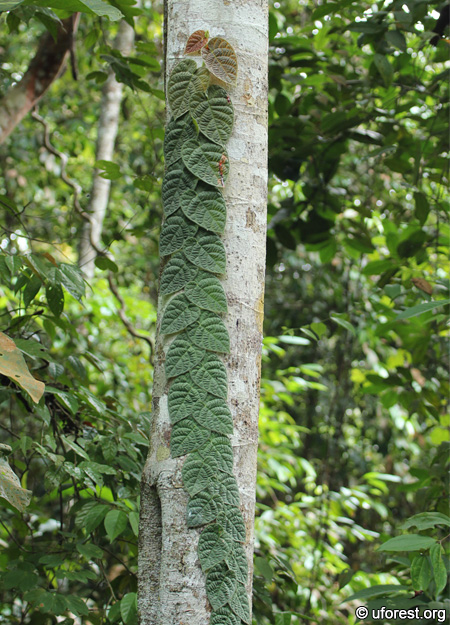
Climbing leaves of Ficus villosa.
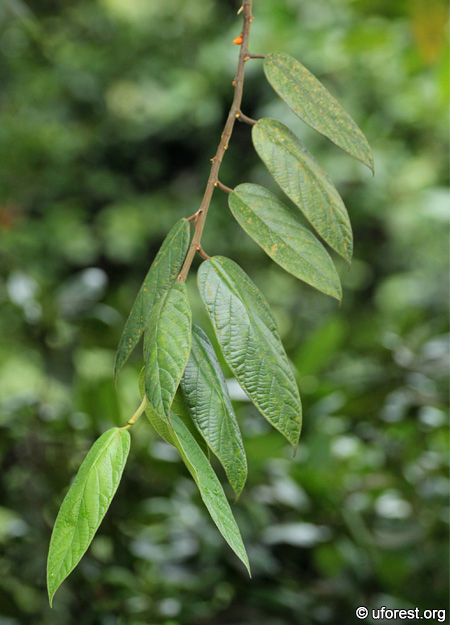
Mature leaves are longer and have less distinct heart-shaped bases.
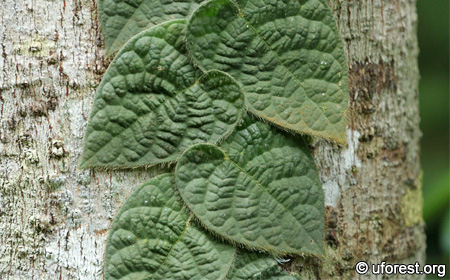
Note the heart-shaped leaves.
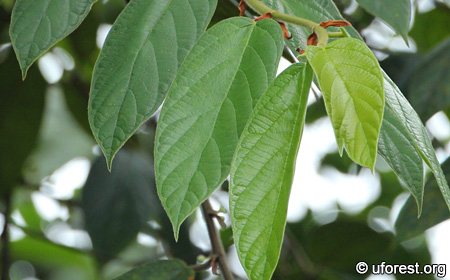
Mature leaves hang freely.
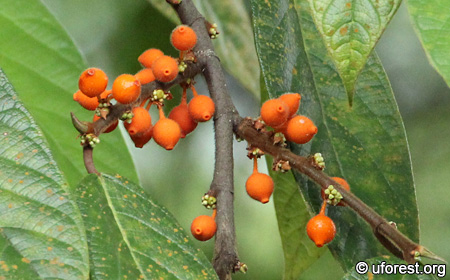
The nipple-like figs ripen to orange.
References
Ng BC. A Ng, B Lee, AL Chuah, SG Goh, JTK Lai, GC Tan & V D'Rozario. (2005) A Guide to the Fabulous Figs of Singapore. Singapore Science Centre, Singapore. 152 pp.Author: Siyang
Posted: 2013-09-17 / Modified: 2017-12-25
Google Ads